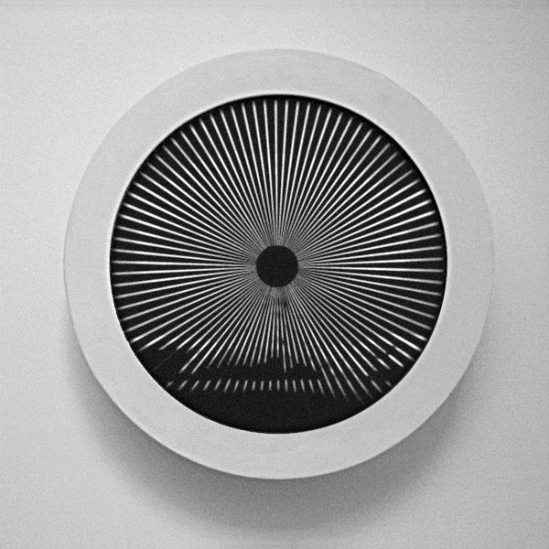Moiré dancing
Consider a dance form that doesn't exist yet:
In which one manipulates patterns of stripes on clothing, and screens of striped transparencies, to create Moiré effects, up to full dynamically manipulated slit animations.
Ever seen slit animations?

Call this dance form Moiré.
How expressive of a language is Moiré? What can you do within it? How you arrange the slits in a slit animation, and how you move them, changes the speed at which they move – even the direction of time or the direction of motion, as you move the velocity vector around. It's easy to imagine that the possibilities are generative and endless, but it's also easy to imagine that it would be a neat gimmick, maybe useful up to a performance or two – but ultimately easy to get over, the space of possibilities exhausted. Something more is needed of an art form than the mere combinatorial explosion of possibilities, that the idea of Moiré seems to illustrate well to me: something that I think is worth calling expressivity.
In short, expressivity is the number of useful handles a language gives you. It's a concept that's only clearly visible when you're asking the question: can I say things I want to say in a language that doesn't exist yet? – where the answer can be clearly, visibly understood to exist.
Does Moiré let you move in ways that feel good, that feel analogous to the visual effects? Is there the capacity for interesting interplay between how I'm choosing to move, say, my arm, and how the galloping horse that's printed on it is galloping as I move it through the screen? Does the pleasing arrangement of limbs in ways that convey a given abhinaya, a theatrical emotional affect, have a legible correspondence to the subjective experience induced by watching the flow of vertiginous patterns in the stripes? Is the whole thing just too stimulating? Is the effect visible enough from a distance? Is it still visible when the stripes are fine-grained enough to reflect a performer's subtle movements? Does it get too confusing in partnered or group work to coordinate effectively?
All this is pre-speech, in the sense of living a layer or two below the bit where you're saying stuff, while still being one layer up from the "medium". It's protocol design. It's linguistic UX.
Person Do Thing is another example, one that illustrates more analytically that a big part of expressivity is embedded in the bounds of the speaker. See also Sentence by sentence annotations of (a very little bit of) Infinite Jest for an example of how sentences direct attention flow, and Stanley Fish - How to Write a Sentence (And How to Read One) for a more thorough discussion of it.
I think of expressivity as belonging to the environment half of the person-environment game: the what-follows half of the endless ubiquitous "what-if X?" "what follows?" dialogue. All its antecedents and consequences are inescapably subjective, and yet all the details of it are stubbornly embedded at the boundaries of the subjective locus of control.
In Moiré dancing expressivity, you'd have to track if an effect was physically achievable, if the flow from effect to effect moved the attention and somatic affect in compatible ways.
But the fact that this can ever be expected to work even a little bit is marvelous to me. Just think of doing an arm wave, and how an animation like the above, printed on a sleeve (or painted on an arm), would look through a striped screen. Delicious. Momentous. Simple undulation, built like a clean little proof that how somatic affect works is also inside the universe, implemented right on top of how space itself works.
More thinking to do about the relationship of expressivity to tatparya.
Another somewhat hotter take: maybe you can recover a lot of the Bauhaus architectural school once you see that their essential mistake is forgetting the speakers of their language, and thereby losing all chance at dwelling-poetics; you have to gut the whole thing to pull out the useful bits, but you absolutely can. See Bauhaus building is antihumanist.